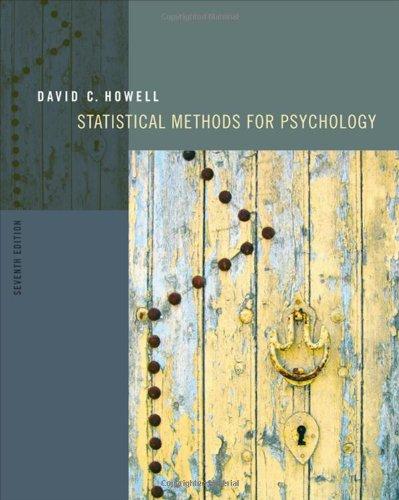A large corporation is interested in predicting a measure of job satisfaction among its employees. They have
Question:
A large corporation is interested in predicting a measure of job satisfaction among its employees. They have collected data on 15 employees who each supplied information on job satisfaction, level of responsibility, number of people supervised, rating of working environment, and years of service. The data follow:
Satisfaction: 223355666788899 Responsibility: 4 2 3 6 2 8 4 5 8 8 9 6 3 7 9 No. Supervised: 534748659893699 Environment: 117358556472879 Years of Service: 575336327355881 Exhibit 15.6 is an abbreviated form of the printout.
a. Write out the regression equation using all five predictors.
b. What are the s? bi b
DEPENDENT VARIABLE . . . . . . . . . . . . . . . 1 SATIF TOLERANCE ......................... 0.0100 ALL DATA CONSIDERED AS A SINGLE GROUP MULTIPLE R 0.6974 STD. ERROR OF EST. 2.0572 MULTIPLE R-SQUARE 0.4864 ANALYSIS OF VARIANCE SUM OF SQUARES DF MEAN SQUARE F RATIO P(TAIL)
REGRESSION 40.078 410.020 2.367 0.12267 RESIDUAL 42.322 10 4.232 STD. STD. REG VARIABLE COEFFICIENT ERROR COEFF T P(2 TAIL) TOLERANCE INTERCEPT 1.66926 RESPON 2 0.60516 0.428 0.624 1.414 0.188 0.263940 NUMSUP 3 –0.3339 0.537
–0.311 –0.622 0.548 0.205947 ENVIR 4 0.4855 0.276 0.514 1.758 0.109 0.600837 YRS 5 0.07023 0.262 0.063 0.268 0.794 0.919492 15.5 Refer to Exercise 15.4.
a. Which variable has the largest semipartial correlation with the criterion, partialling out the other variables?
b. The overall F in Exercise 15.4 is not significant, yet Environment correlates significantly (r 5 .58) with Y. How is this possible?
Step by Step Answer:







